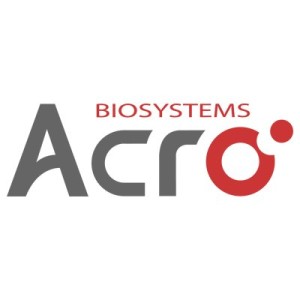- Get directions
- Send an email
- Leave a review
- Bookmark
- Share
- Report
- prev
- next
- Tuesday, August 23, 2022 @ 9:00 am
ACROBiosystems has successfully launched its Claudin family proteins, including Claudin 18.2, Claudin 18.1, Claudin 6, and Claudin 9, using its ‘FLAG’ technology.
ACROBiosystems has successfully launched its Claudin family proteins, including Claudin 18.2, Claudin 18.1, Claudin 6, and Claudin 9, using its ‘FLAG’ technology. Full-Length Active Gallery (FLAG) is ACROBiosystems’ series of multi-pass transmembrane protein development platforms including virus-like particles (VLP), detergent micelles, and Nanodiscs. Generally, these full-length multi-pass transmembrane target antigens are difficult to prepare while maintaining their native conformation. However, through their FLAG technology, ACROBiosystems offers full-length Claudin family proteins with high bioactivity and batch-to-batch consistency that is verified through ELISA, SPR, BLI, FACS, and other methods, to support innovative drug research and development.
The Claudin protein family is a critical component of tight junctions (TJs). These TJs exist in the junctional complex of epithelial and endothelial cells, which plays a crucial role in cell polarity, adhesion, and permeability. Tissue structure integrity, transmembrane movement, and signal transduction inside and outside of cells are regulated by TJs. When the integrity of TJs is compromised, increased bypass permeability occurs. This can directly lead to the perfusion and extravasation of cancer cells through the endothelial barrier resulting in increased bypass permeability. This is exemplified in the initial stages of tumor metastasis when tumor and endothelial cells begin to separate. This separation directly leads to the perfusion and extravasation of cancer cells through the endothelial barrier, driving tumor metastasis.
Recent studies have shown that the abnormal expression of Claudin family proteins, as a key component of TJs, is closely related to the occurrence, development, and prognosis of tumors, thus making them ideal therapeutic targets with high potential.
For example, Claudin 18.2 is a therapeutic target for solid tumors such as gastric cancer and pancreatic cancer due to its high specificity and stable expression. In addition, the development of drugs targeting Claudin 18.2 includes various forms such as monoclonal antibody, bispecific antibody, ADC, and CAR-T cell therapy. Similarly, Claudin 6 is always highly expressed in tumor tissues in liver cancer, ovarian cancer, endometrial cancer, and esophageal cancer but not in surrounding normal tissues. This makes it another significant target for tumor therapy. Finally, Claudin 9 is another potential target that is abundantly expressed in the anterior pituitary gland and is the main component of the TJs of follicular stellate (FS) cells, which can be used as a marker to track and identify FS cells. The overexpression of Claudin 9 is closely related to the invasion of pituitary oncocytoma, occurrence, and progression of gastric cancer, cervical cancer, and lung cancer metastasis, and will serve as a diagnosis, prognostic marker, and immunotherapy target for these diseases.
Although many Claudin family proteins are potential therapeutic targets, it is extremely difficult to obtain biologically active soluble antigens due to their structural peculiarities such as multiple hydrophobic transmembrane regions. This seriously hinders the development of drugs and therapies targeting Claudin proteins. Like other multi-pass transmembrane proteins, the expression level of recombinant four-pass Claudin proteins is much lower than other soluble proteins due to cell membrane surface area and potential cytotoxicity of overexpressed membrane proteins. Thus, to obtain a sufficient number of proteins for immunization and drug development, it is necessary to design and optimize the expression interval, expression system, and culture conditions.
ACROBiosystems has made a significant breakthrough in the bottlenecks in the multi-pass transmembrane proteins preparation including Claudin 18.2, Claudin 18.1, Claudin 6, and Claudin 9 based on their featured technology platforms. All of these proteins have stabilized structures and high activities to facilitate innovation drug and therapy development as well as mechanism studies.
References
- Du H, Yang X, Fan J, et al. Claudin 6: Therapeutic prospects for tumors, and mechanisms of expression and regulation[J]. Molecular Medicine Reports, 2021, 24(3): 1-9.
- Sharma, R.K., Chheda, Z.S., Das Purkayastha, B.P. et al. A spontaneous metastasis model reveals the significance of Claudin 9 overexpression in lung cancer metastasis. Clin Exp Metastasis 33, 263–275 (2016). https://doi.org/10.1007/s10585-015-9776-4
- Higashi, A.Y., Higashi, T., Furuse, K. et al. Claudin 9 constitute tight junctions of follicular-stellate cells in the anterior pituitary gland. Sci Rep 11, 21642 (2021). https://doi.org/10.1038/s41598-021-01004-z
